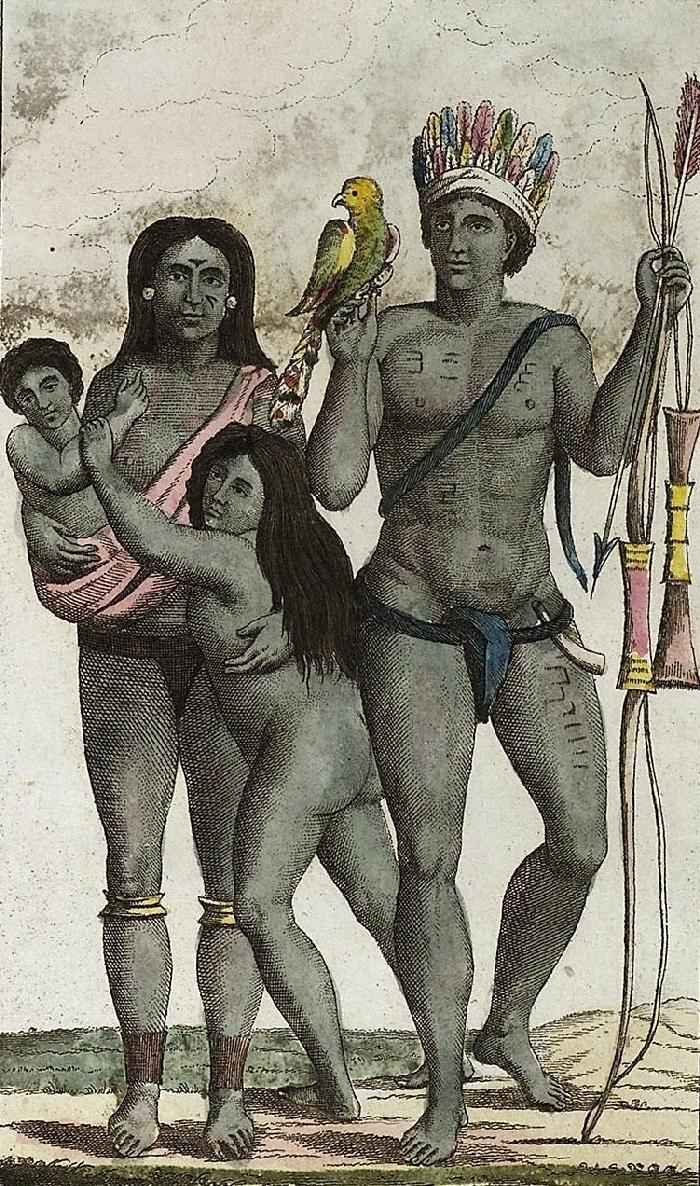
Native American Civilizations: South America--Northern Tribes

Figure 1.--The drawing shows an Arawak family from Sriname. It was drawn by John Gabriel Stedman (1744-97), a colorful Scoots-Ditch 18th century adventurer who traveled widely in Suriname a partcipated in the supression of a slave revolt. His illustrated 'Narrative of a Five Years Expedition against the Revolted Negroes of Surinam' (1796) is an important historical source.
|
|
The Aeawaks and Caribs are the two most important tribal groups in nothern South America. The relationshop between the two is a matter of debate. A major ethnic group along the northern coast, both the Caribbean (Colombia and Venezuela) and the Atlantic coasts (Guianas) and inland waterays like the Orionoco were the Caribs. The Caribs were not politically centralized people and thus there are many different tribes of Carib origins. In Colomobia alone there are 84 indigenous people, most of Carib origins. One such tribe is the Molitones Bari [singular Molitón Bari] live in the region of Catatumbo (Northern department of Santander. Catatumbo is a strategic region. It is near of the boundary with Venezuela. In the region there is also a lot of oil and coal. Through the time the exploitation of oil and coal caused land expropriations. Today the Molitones Bari's culture could disappear. This is the reason for a 2008 protest marches. Another major tribe is the Arawaks. The relationship between the Caribs and Arawaks is not fully understood. The Arawaks from northeastern South America peopled much of the Caribbean. Only Cuba seems to have been peopled from Mesoamerica. At the time the Europeans arrived the Caribs were reportedly in the process of conquering the Arawaks on many islands. Some modern scholars are suspicious of this assessment. At a realatively early pont, howevert, both Arawak and Carib populations were decimated by European mistreatmrnt and disease. The Arawaks and Caribs on the islands had no where to retreat to to escape from the Spanish and other Europeans. On the continent, the Arawaks and Caribs could retreat into the vastness of the interior and thus survive today in small numbers.
HBC

Navigate the Historic Boys' Clothing Web Site:
[Return to the Main South American Native American page]
[Return to the Main Native American page]
[Introduction]
[Activities]
[Biographies]
[Chronology]
[Clothing styles]
[Countries]
[Bibliographies]
[Contributions]
[Essays]
[FAQs]
[Glossaries]
[Images]
[Links]
[Registration]
[Tools]
[Boys' Clothing Home]
Created: 3:16 AM 2/9/2011
Last updated: 3:16 AM 2/9/2011



